Artificial intelligence means supermarkets are able to do more with data than they – or consumers – could ever have imagined. So will AI ‘nudges’ transform how people eat – or just creep them out?
Tesco is watching you. If you’re a shopper, that is. It sees what you buy, how often, at what times of day and where, as well as what you search for but don’t find, pick up but put down again. And applying data analysis, algorithms and AI to these vast data stores, it can feasibly figure out what’s in your bins, when you’re feeling ill, when you have visitors coming over and when you’ve turned to chocolate to self-medicate after a tough day.
It knows. But having so far restrained itself to using its loyalty card data findings to serve up more relevant promotions and ads to consumers, Tesco is now wanting to “nudge” them too, according to its CEO.
As Ken Murphy told the Financial Times’ Future of Retail event last month, he “can see” AI being applied to Clubcard data, “nudging you, saying: ‘I’ve noticed that in your shopping basket your sodium salt content is 250% of your daily recommended allowance. I would recommend you substitute this, this and this for lower sodium products to improve your heart health’.”
And that’s just one of “a host of applications” of “really simple stuff that can transform stuff that you don’t give a whole lot of thought to, that can help bring your shopping bill down and reduce waste” he added.
Tesco’s communications team quickly scrambled to state the retailer was not currently planning to roll out the AI nudge concept. As Ben Pilgrim, head of digital innovation at Fold7, puts it, Murphy’s comments might be more a case of “every product team’s worst nightmare: the CEO read something about AI” than a concrete roadmap. But the intent – and from the very top – is clearly there.
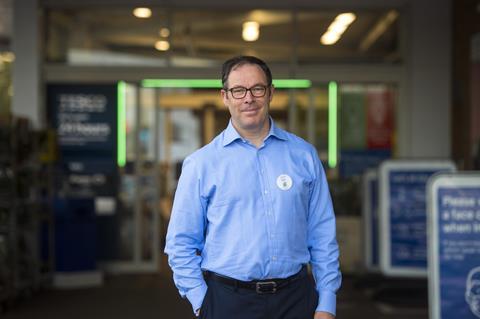
Where might it lead? As SharpEnd chief commercial officer Greg Brooks suggests: “If we want to go full Nineteen Eighty-Four, maybe we could end up being banned from the bacon until we eat more broccoli.”
Do consumers want supermarkets to nudge them in this way (even if it’s for their own good)? How do supermarkets stay the right side of the creepy line with AI nudging? And is it “really simple stuff” as Murphy claims, or actually quite scary stuff?
Getting hyper-personal with shopper data
Tesco has been collecting individual shopper data since the dawn of Clubcard nearly 30 years ago. Sainsbury’s Nectar has for 23 years; Ocado for about as long; Morrisons since 2014; and Asda since 2022. These huge banks of information have for most of their existence been used for benign, operational purposes like predicting demand and informing ranging decisions.
But more recent advances in data science, powerful algorithms and AI have given supermarkets the ability to get hyper-personal with shoppers. It’s enabled them to more effectively tempt shoppers towards making additional purchases based on what they already like or might; participate in promos and keep coming back.
“Retailers need to strike a balance – being too transparent could backfire and make people uncomfortable”
James Calvert, head of generative AI at M&C Saatchi
And consumers mostly appreciate the personal touch. A September Intuit Mailchimp survey found 60% of Brits welcome greater personalisation from retailers (rising to 75% for those aged 18-24). A third (36%) agree personalisation stops them “missing out” on products and deals, while nearly half (48%) appreciate automated product suggestions because it saves them time.
Murphy’s suggestion Tesco could use AI to reduce bills – the example given was shoppers being informed in advance when a favourite line was coming on promotion – would surely be welcomed.
“Personalisation works because people notice things that seem to notice them,” says James Calvert, head of generative AI at M&C Saatchi. “It’s all about context. People appreciate feeling recognised and looked after—especially when a nudge is genuinely helpful.”
But the capability is there – should it dare use it – for Tesco to, say, spot bad eating habits and warn an individual off their third pack of biscuits that week. Would it show they truly care?
“No one wants to feel judged or monitored,” Calvert says. “Suggestions that help people save or discover new products tend to be welcomed, but reminders that border on lecturing might feel intrusive. AI’s role should be to assist, not to cross personal boundaries.”
There is a line between friendly assistant and judgemental overseer that shouldn’t be crossed, agrees Ross Bamford, AI lead at Heineken, Tesco Bank and Adidas digital consultancy CreateFuture. Shoppers stay on board “only if it materially benefits them” he says.
“Letting them know their favourite product is on promotion will always be well received,” he says. “There’s a clear and immediate material benefit, and most people won’t overthink it. However, when it comes to nudging people towards ‘better behaviours’, it’s doubtful.
“People don’t like to be told what to do, even if it saves them money or improves their health. Time and again we’ve seen well-intentioned government financial and public health initiatives fail or receive significant backlash for them being perceived as ‘state nannying’. I don’t see it being any more favourably received when it’s a retailer’s AI model doing the nudging.”
Nudging shoppers to healthier outcomes
Tesco and other supermarkets planning similar nudge strategies need to be aware of their role, and probably stay in their lane, says Pilgrim.
“Customers don’t want it any more than they want their kettle going on a tea-making strike to save their energy bill,” he says. “It’s not that it’s creepy, it’s just an annoying overstep. Tesco has a role – as a provider of groceries, maybe as a recipe recommender. But not as some self-appointed health guru.”
The rise of retail media only compounds the promise and potential pitfalls of this sort of personalisation. As supermarkets recognise the value of their data to brands wanting to target their ads more effectively, stores have been kitted out with digital screens, while the typical online shopping journey now brings far more exposure to marketing.
The Grocer revealed earlier this month that Tesco Scan as you Shop devices will soon be serving up brand ads based on a shopper’s location in a store. “I’m about to go into the frozen aisle and on my Scan as you Shop device I’m delivered a display message for a particular product, offer, or promotion that’s in that frozen aisle,” is how Lee Roberts, head of sales at Tesco Media & Insight Platform described it to brands.
Such a self-scan device knows when an individual is approaching a particular aisle. What if it suggested they change course? Or worse?
“A darker – but, in my opinion, somewhat inevitable – view of the future emerges when we link these datasets and have AI models operating on an increasingly connected view of our daily lives,” says Bamford. “Advising me to cut down on salt is one thing, even if it’s not something I’d appreciate, but refusing the sale, informing my health insurer, and scheduling a mandatory visit from a dietician to help reduce pressure on the NHS if I don’t comply is quite another.”
After Murphy revealed his vision, fears of Tesco’s AI capability becoming something like the all-seeing robot HAL 9000 in 2001: A Space Odyssey, and saying ‘I’m sorry Dave, I’m afraid you can’t eat that’, increasingly feel like less of a leap. The comments this week from Tesco’s tech chiefs on a trip to China exclaiming “It’s high time to look east for a glimpse into the future” will hardly calm concerns.
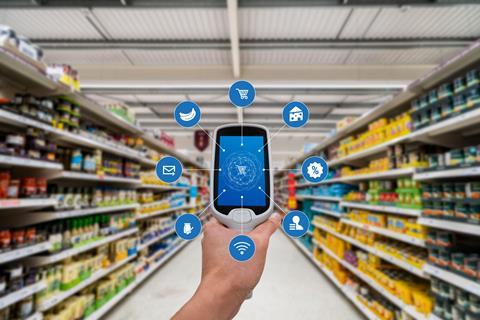
“In an ideal world, AI creates seamless shopping experiences – tailoring every basket to a customer’s exact needs,” says Calvert. “But the flipside isn’t hard to imagine: an overbearing AI that tracks every calorie, every purchase, and nudges at every turn. The challenge is ensuring the tech remains a helpful tool, not a controlling force.”
In any case, the use case proposed by Murphy is less of a nudge than a hard poke in the eye, according to Pilgrim. “A nudge is a subtle bit of psychology and experience design,” he says. “It’s a breath on the wind, not a bat round the head.”
“The challenge is ensuring the tech remains a helpful tool, not a controlling force”
If consumers eating better is the aim, there are other ways to achieve it. Sainsbury’s annual Nectar incentives challenge, for example, is using ‘personalisation, gamification and rewards’ to boost fruit & veg purchases and it has led to 25 million additional portions purchased in its latest trial. Supermarkets must be a bit more nuanced about it, Pilgrim argues.
“The nudge would be to only show or prioritise low-sodium items and then make people opt in or scroll to see less healthy items. Not flash an AI triggered warning that they’ve entered a culinary danger zone. Murphy has fallen into the 2024 trap: trying to crowbar AI into everything. But using AI to do this would be like using the Royal Philharmonic to announce there is someone at the door. Technically feasible but dramatic overkill. How about just asking consumers how many people they are shopping for to inform recommended quantities and using a simple calculator?”
Get AI interventions wrong and it threatens to give the whole supermarket data game away. Serving up overly intimate and uncanny recommendations or health nudges to consumers exposes just how much data is held on individual shoppers.
“Most of us know retailers track their behaviour, thanks to GDPR and loyalty programmes,” says Calvert. But to what extent varies. Retailers need to strike a balance – being too transparent could backfire and make people uncomfortable. This is where the ‘decoy effect’ comes in. By focusing on benefits like savings or health, supermarkets can keep the spotlight on the value and end benefit provided, rather than focusing attention on the vast data collected.”
Bamford agrees most people are attuned to the data being collected on them, “but the exact scale of it would probably come as a surprise to most” he says.
“The increasing use of AI technologies and the emergence of new use cases for that treasure trove of data carries the risk of the public becoming more aware of just how deeply retailers understand the rhythms of their daily lives. Inferences can be drawn from what people buy and when they buy it, much of this awareness built on seemingly benign personalised Clubcard offers and the like. This could easily lead to a backlash from consumers and decreasing engagement with rich sources of data,” Bamford adds.
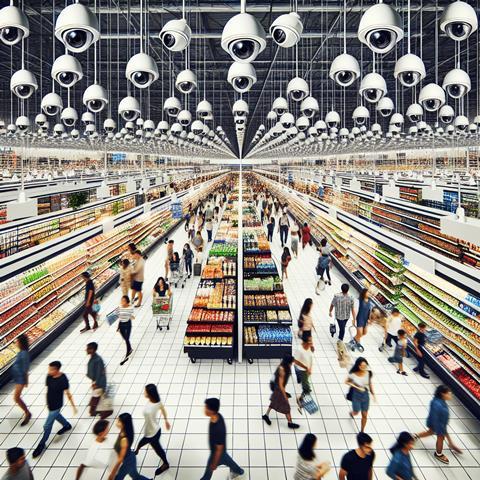
Customers’ willingness to share their data shouldn’t be taken for granted. While Brits are happy to trade personal data in return for more relevant material from marketers, 62% feel they need to see more value in this exchange, according to the Intuit Mailchimp survey.
And providing too much personalisation – however possible AI makes it – can have the unintended consequence of harming sales.
“While hyper-personalised experiences are exciting for retailers, brands and shopper marketing agencies like us, there’s a risk of creating ‘filter bubbles’ – where consumers are only exposed to products that fit into their current habits and preferences,” says Neil Brenson, managing partner at marketing agency Jellybean. “This could limit discovery of new products.
“Moreover, the relentless focus on personalisation might overwhelm some shoppers. Not every consumer wants to be nudged constantly, and over-targeting can lead to ‘nudge fatigue’ – where people start to tune out suggestions, offers and recommendations. It’s important not to fall into the trap of thinking that consumers want to shop on AI autopilot. While AI can offer helpful nudges and personalisation, shopping experiences shouldn’t become robotic or overly controlled. Most people still want the enjoyment of discovery and a bit of spontaneity.”
James Poulter, head of AI and innovation at House 337, agrees. “By eliminating the serendipity of choice – the ability to stumble across things that maybe weren’t intended for you but you might be interested in – we all become quite limited in the view of the products, services, content, and entertainment we end up consuming.
“AI should enhance the shopping journey, not dictate it,” he adds.

A potential lifesaver
But AI can save lives. A January study by researchers from Imperial College London, UCL and the University of Birmingham, funded by Cancer Research UK analysed six years’ worth of purchase histories from Tesco and Boots for 273 women. The research found that a spike in a consumers buying over-the-counter pain killers and digestive aids like antacids served as a sound early indicator of ovarian cancer.
“It’s incredible to think that using loyalty cards, something most of us carry in our wallets, could help women with ovarian cancer, which is often diagnosed late and mimics the symptoms of other, more benign conditions,” said Dr David Crosby, head of prevention and early detection research at Cancer Research UK.
More recently, as reported by The Sunday Times, Boots will use Advantage Card loyalty scheme data to identify people who have been buying antacids for six months to ask for their consent to be approached by research organisations and healthcare companies to take part in clinical trials.
Indeed, many people are happy to send off a stool sample to a company like Zoe in return for a bespoke dietary directive. But they might not want the same level of intimacy from a supermarket.
“There is a fine line between giving customers information they find helpful, and nagging,” says Brooks. “The key is positioning AI as a tool that enriches the customer experience, rather than overstepping boundaries. The customer values a personalised experience when it enhances their engagement with a brand – not when it uses data to an intrusive level.”
Get it wrong and supermarkets have everything to lose. “A mishandling of these technologies could result in a complete loss of public trust,” says Bamford, “leaving retailers in real danger of shooting themselves in the foot – and possibly blowing off the whole leg.”
Regulators wrangle with ‘scary’ collection
The value the public places on data collection and AI has increased in the past year – and consumers recognise the personal benefits of data and its societal benefits.
But anxiety remains. A growing proportion of Brits think AI will have a net negative impact, with words such as ‘scary’, ‘worry’ and ‘unsure’ commonly used to express feelings associated with it, according to the Department for Science, Innovation & Technology.
Supermarkets must be cautious about feeding the fear. Much of that centres on being transparent about how a shopper’s data might be used by AI.
“When you signed up for a loyalty programme, were you told AI would be making decisions about your habits? Probably not,” says Poulter. “Rather than opting people in for future data collection with clear guidelines and understanding of how large language models will be used to interpret that data, many of them are simply switching on the AI tap, overlaying it on top of existing data that’s been collected over many years,” he adds.
“The problem with this is that most consumers may not have opted into this type of data manipulation, and certainly wouldn’t expect that AI would eventually reach a point where it could helpfully acknowledge and manage that data.”
Regulators are wrangling with the issue too. The EU AI Act comes into force in February, to protect citizens from harmful manipulation from AI systems. In the UK, Labour has taken a less restrictive approach to AI. But the government is behind ‘smart data schemes’, which it defines as “the secure sharing of a customer’s data upon their request, with authorised third-party providers”.
“My vision of ‘smart data’ is making the individual the data controller, not the organisation – this is the utopia,” says J Cromack, chief growth officer, Salocin Group.
“If data trust in organisations declines and people start to go off grid, a digital society would be halted and we’d all suffer – society, business and the people themselves.”








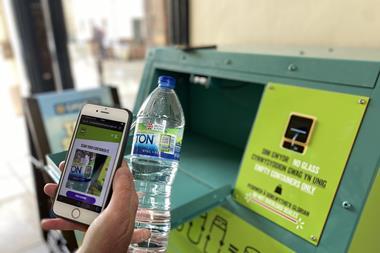
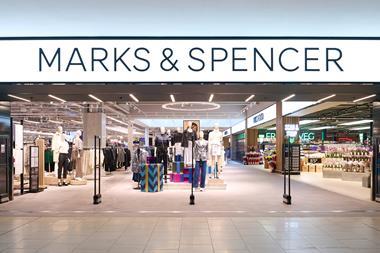
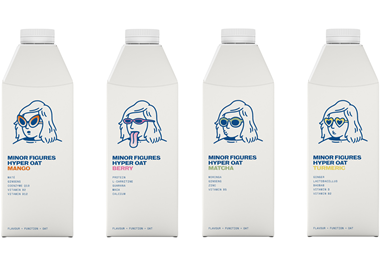
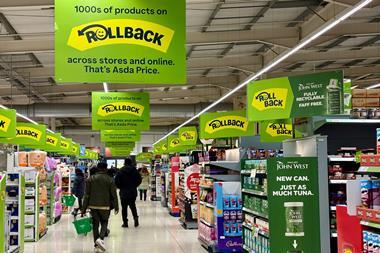

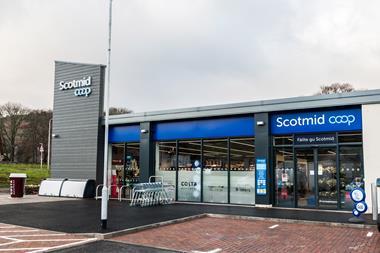






No comments yet